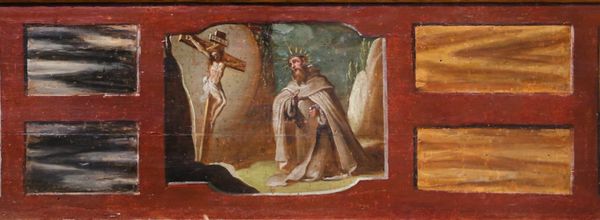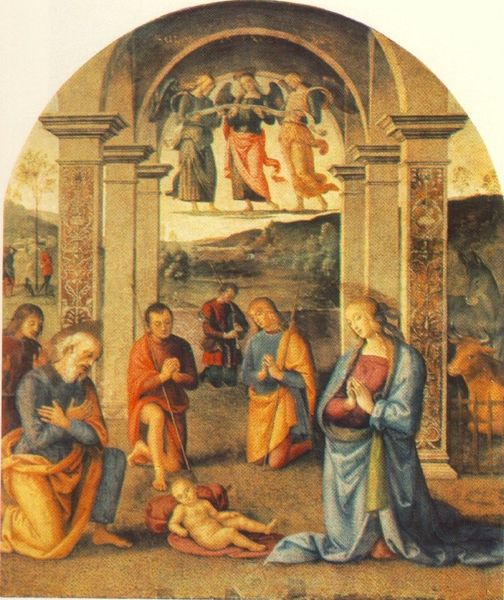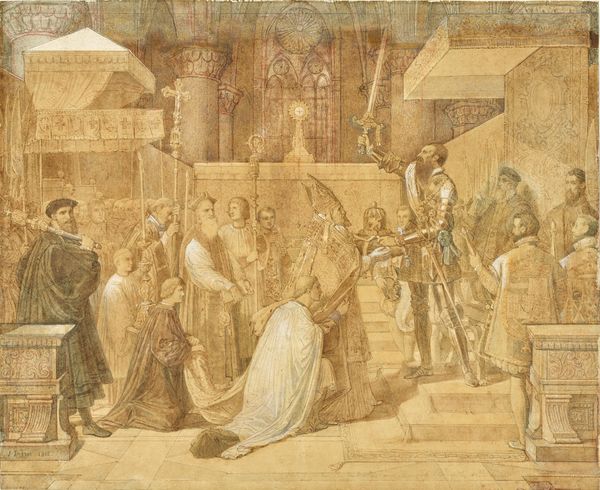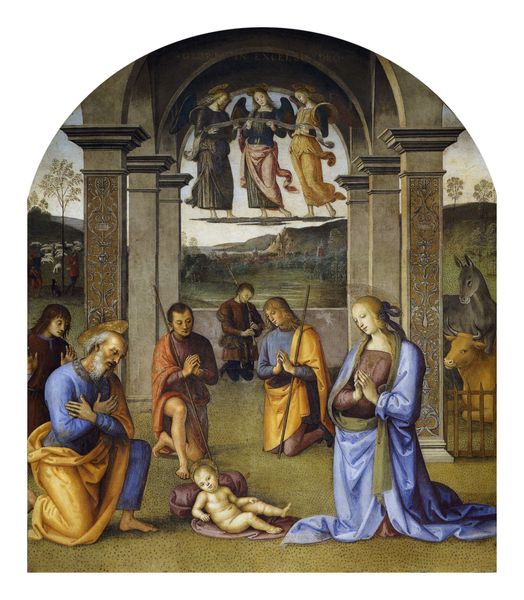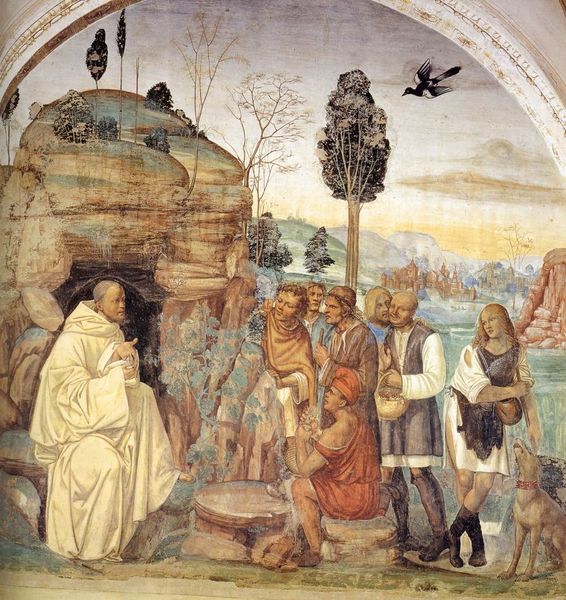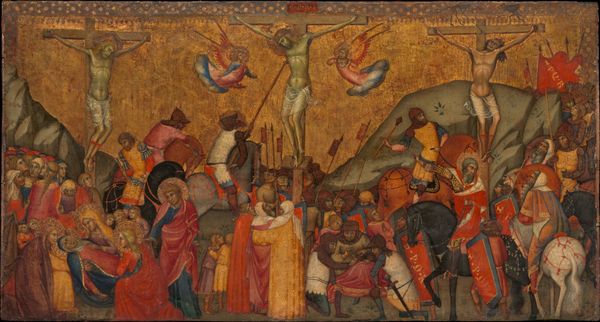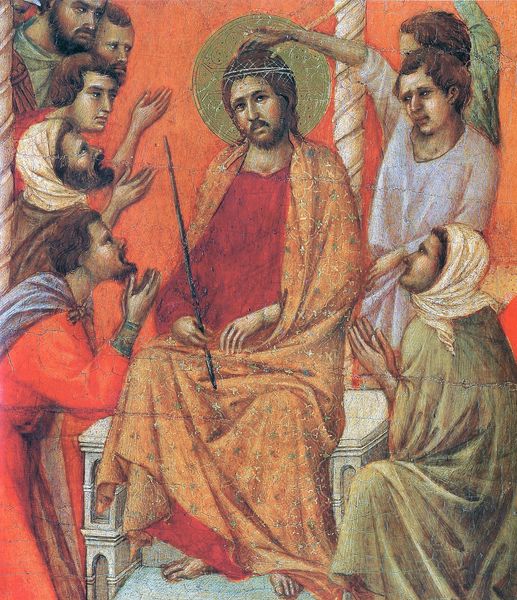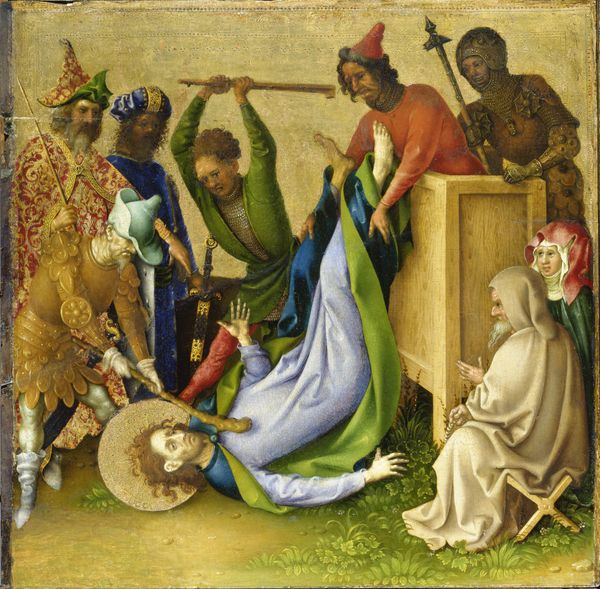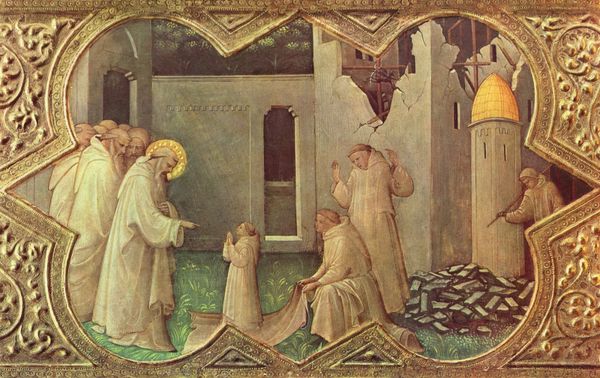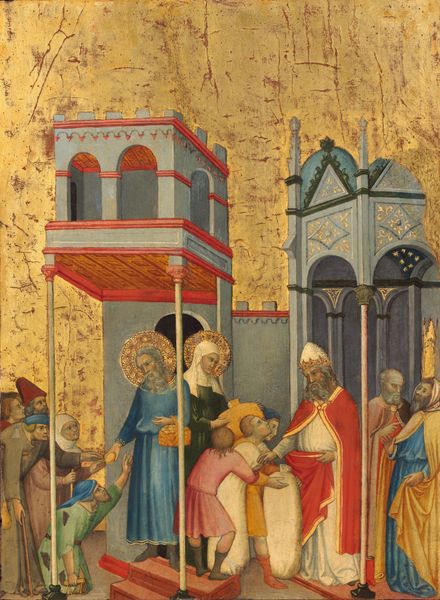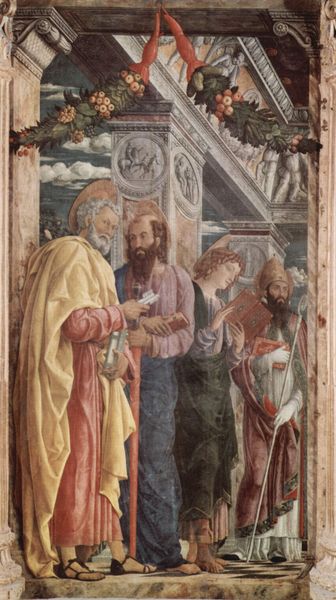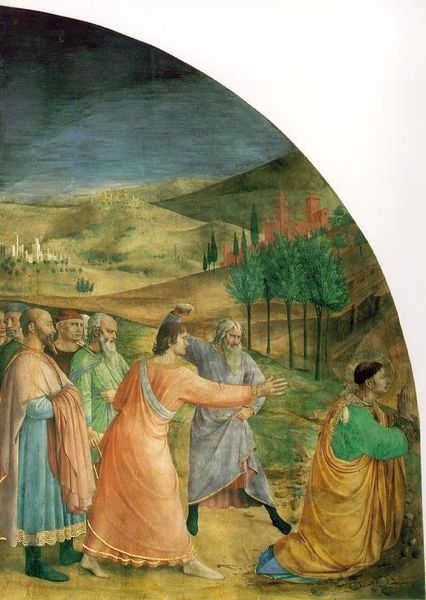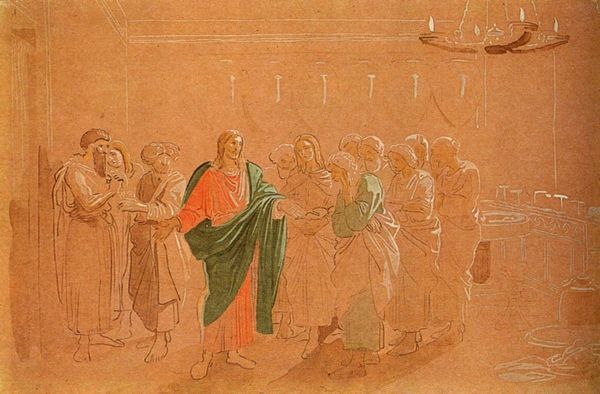
tempera, painting
#
tempera
#
painting
#
landscape
#
figuration
#
christianity
#
history-painting
#
italian-renaissance
#
early-renaissance
Copyright: Public domain
Editor: This is Pietro Perugino’s "Nativity," painted in 1502 using tempera. It strikes me as surprisingly calm and serene. The muted palette gives it almost an ethereal quality, and the figures are arranged so harmoniously. What do you see in this piece? Curator: The formal elements of this work immediately draw the eye to Perugino's manipulation of space. Note the delicate linear perspective; it isn't merely a backdrop, but an integral element establishing a calculated recession into depth. This generates an open and airy effect. How do you interpret the carefully modulated colors within this structure? Editor: I think the pale hues create a sense of distance, but also softness, especially the blue tones used in the Virgin Mary's robe. But I’m interested in the pillars that recede behind the figures: what’s their significance here? Curator: Consider how the pillars' verticality punctuates the space. The ruined or incomplete look could imply a transition or rupture of something old, and with the symmetry disrupted it enhances this work's subtle asymmetrical balance overall. Have you observed the distinct rendering of each character, which directs our gaze towards distinct formal articulations of devotion and peace? Editor: Yes, everyone seems lost in their thoughts, or, rather, prayers, further accentuated by Perugino's gentle colors. Now I understand why you call attention to these aspects! Thanks! Curator: Precisely. It's within these carefully calibrated formal relationships that the spiritual essence of the work is located and through which a richer understanding of Perugino’s artistic innovation is revealed.
Comments
No comments
Be the first to comment and join the conversation on the ultimate creative platform.
